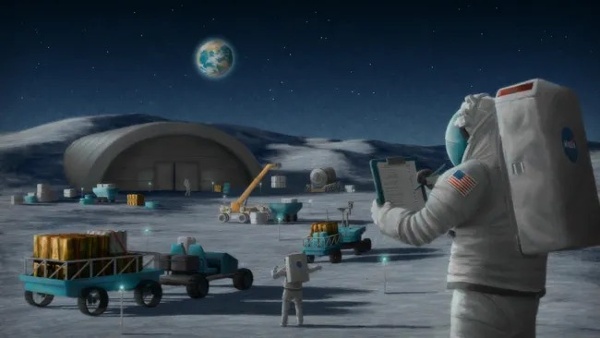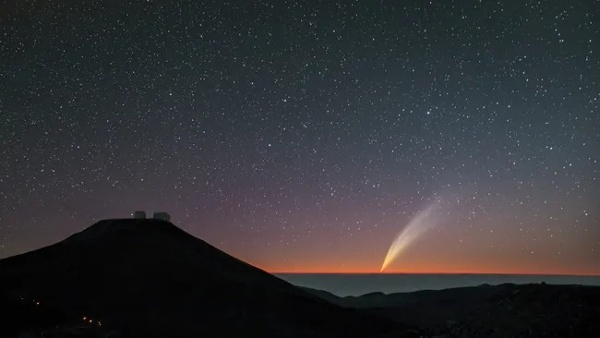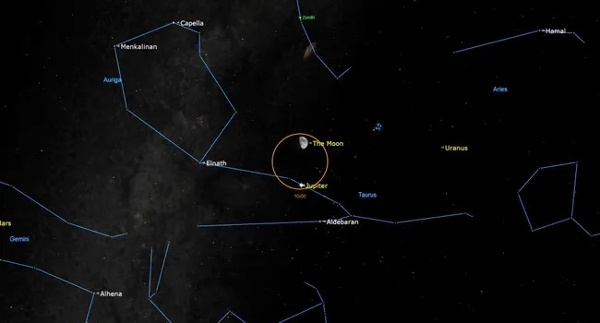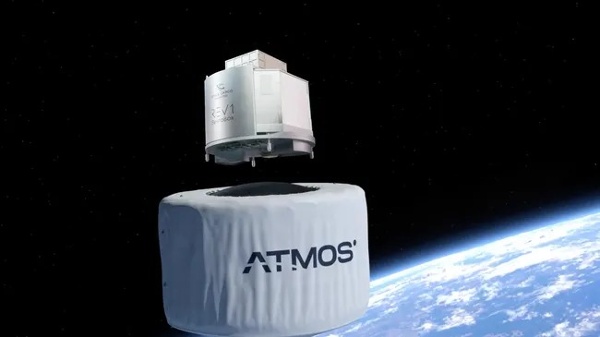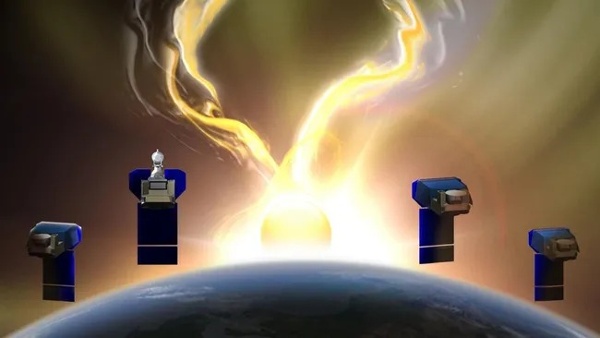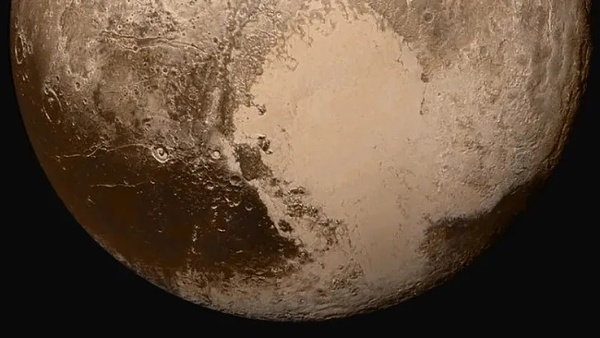Imagine a universe where every decision you make spawns a new reality, where you’re not just one version of yourself but an entire ensemble cast of alternate personas, each living out different choices in their own unique worlds. Sounds like the plot of a sci-fi blockbuster, right? But what if I told you that this mind-bending concept isn’t just the stuff of fiction? Welcome to the enthralling realm of parallel universes, where the boundaries of reality blur and the very fabric of existence is woven with threads of possibility.
At the heart of this cosmic conundrum lies quantum mechanics, a field of science that often feels like it was penned by a particularly imaginative author on a caffeine high. It reveals that at the subatomic level, particles behave in ways that defy our everyday understanding of reality. Take, for instance, the famous double-slit experiment, where particles can exist in multiple states simultaneously until observed. It’s as if they are playing hide-and-seek with reality itself! This peculiar behavior raises tantalizing questions: What if our universe is just one of many? What if, for every choice we make, a new universe springs into existence, each a reflection of our myriad possibilities?
Now, let’s dive into the philosophical implications of this tantalizing theory. If parallel universes exist, what does that mean for our understanding of free will? Are we truly the masters of our fate, or are we mere actors in an infinitely complex play, with each performance unfolding in a different universe? Imagine a world where you decided to become a professional cat juggler instead of a writer—somewhere out there, that version of you is living the dream (or nightmare, depending on how skilled you are with felines)!
As we embark on this adventurous journey through the cosmos of thought, we’ll explore the concept of reality versus perception. What we perceive as “real” may merely be a sliver of a much grander tapestry of existence. Are we limited by our senses, or is there a vast universe of experiences waiting just beyond our comprehension?
So, buckle up, dear reader! Our exploration into the nature of parallel universes promises to be a wild ride filled with scientific wonders, philosophical musings, and perhaps a few laughs along the way. Let’s uncover the mysteries that lie beyond our understanding and see if we can make sense of this cosmic puzzle together!
Theoretical Foundations of Parallel Universes
Let’s kick off our exploration of parallel universes with the Many-Worlds Interpretation (MWI). Picture this: every time you flip a coin, the universe splits. In one universe, it lands heads; in another, it’s tails. This theory, proposed by physicist Hugh Everett III in the 1950s, suggests that all possible outcomes of quantum measurements actually occur, each in its own separate universe. So, if you’ve ever wondered what life would be like if you had chosen a different career path, rest assured, there’s a universe where you’re a rock star, belting out tunes to adoring fans!
As we ponder the implications of MWI, let’s take a detour into the realm of string theory. This mind-boggling framework posits that the fundamental building blocks of the universe aren’t particles but tiny, vibrating strings. Now, these strings can exist in multiple dimensions—more than the three we’re accustomed to! Imagine a world with 10 or even 11 dimensions, where the rules of physics dance to a different tune. In such a universe, the possibilities for alternate realities expand exponentially, creating a rich tapestry of potential worlds just waiting to be discovered.
Now, speaking of possibilities, let’s dive into quantum superposition. This phenomenon allows particles to exist in multiple states at once, much like a cat that is both alive and dead until someone peeks into the box (thanks, Schrödinger!). In the context of parallel universes, superposition suggests that until we observe a particle, it occupies all its potential states simultaneously. This means that every decision we make could lead to a branching path of realities—like choosing between pizza or tacos for dinner and inadvertently creating a universe where you’ve become a taco connoisseur!
Next, let’s explore cosmic inflation and the multiverse theory. This theory posits that shortly after the Big Bang, the universe underwent an exponential expansion, leading to the vast cosmos we see today. But what if this inflation didn’t just create our universe? What if it spawned countless others, each with its own unique laws of physics and realities? Imagine a multiverse where some universes are governed by different forces, leading to bizarre and wonderful phenomena. It’s like a cosmic buffet where each dish is more exotic than the last!
Finally, let’s compare the various theories supporting the existence of parallel universes. From MWI and string theory to cosmic inflation, each theory offers a unique lens through which we can view the cosmos. While some scientists champion one theory over another, the beauty of this exploration lies in the interplay of ideas. Each theory adds a layer to our understanding, inviting us to ponder the infinite possibilities that lie just beyond our reach.
As we wrap up this section on the theoretical foundations of parallel universes, it’s clear that the universe is far more complex and intriguing than we ever imagined. With each theory, we peel back the layers of reality, revealing a cosmos bursting with potential and wonder. So, let’s keep our minds open and our imaginations wild as we continue our journey into the unknown!
Quantum Mechanics and the Nature of Reality
As we delve deeper into the fascinating world of quantum mechanics, let’s start with the observer effect. This quirky phenomenon suggests that the mere act of observing a particle can alter its state. Imagine you’re at a party, and you want to catch a glimpse of the mysterious guest in the corner. The moment you look, they change their outfit—now they’re wearing a clown suit instead of their usual attire! In the quantum realm, this means that particles exist in a state of probability until we observe them, collapsing into a definite state. It’s as if the universe is playing a cosmic game of peekaboo, where reality shifts based on our attention.
Now, let’s consider the role of consciousness in shaping reality. If observation can change a particle's state, what does that say about our own perceptions? Some theorists argue that consciousness itself plays a pivotal role in the manifestation of reality. Picture this: every thought you have could be influencing the universe around you, like a cosmic artist painting the world with your intentions. This notion blurs the lines between observer and observed, inviting us to ponder whether our minds hold the key to unlocking new dimensions of existence.
Speaking of interconnectedness, let’s dive into quantum entanglement. This phenomenon occurs when two particles become linked in such a way that the state of one instantly influences the state of the other, no matter how far apart they are. It’s as if you and your best friend share a secret handshake that transcends distance. Einstein famously referred to entanglement as “spooky action at a distance,” and it challenges our understanding of separation in the universe. This interconnectedness suggests that everything in the cosmos might be more closely related than we ever imagined, knitting a web of relationships that spans across dimensions.
Now, let’s engage in a lively debate over objective reality versus subjective experience. If our perceptions can alter reality, can we truly claim to have an objective understanding of the universe? It’s like trying to agree on the best pizza topping—everyone has their own preference! This philosophical quandary raises questions about the nature of truth: is it a universal constant, or is it shaped by our individual experiences? The implications are staggering, suggesting that each person may inhabit a unique version of reality, colored by their perceptions.
Finally, we arrive at the challenge quantum mechanics poses to traditional notions of determinism. In classical physics, the universe is a well-oiled machine, with every action leading to a predictable outcome. However, quantum mechanics introduces an element of randomness that shakes the foundations of this deterministic worldview. Imagine a world where the future isn’t set in stone but is instead a swirling mass of probabilities, waiting for your choices to shape it. This radical shift in understanding invites us to reconsider our place in the universe and the extent of our influence over our destinies.
As we conclude this section on quantum mechanics and the nature of reality, it’s clear that our exploration has only scratched the surface of these profound concepts. Each idea we’ve discussed opens up new avenues of thought, urging us to question our assumptions and embrace the mysteries that lie ahead. So, let’s keep our curiosity ignited as we venture further into the cosmos of knowledge!
Philosophical Perspectives on Parallel Universes
As we embark on our philosophical journey through the landscape of parallel universes, we must first explore the metaphysical implications of existence itself. What does it mean to exist in a universe where countless versions of ourselves are playing out different lives? This question invites us to ponder the essence of being—are we defined by our choices, or do we merely exist as a collection of possibilities? Imagine standing at a crossroads, with each path representing a different version of you, each one a testament to the myriad choices that shape your identity.
This contemplation leads us to consider the impact of parallel universes on the concept of free will. If every decision we make spawns a new reality, does that diminish our sense of agency? Are we truly the architects of our destinies, or are we simply navigating a preordained script? This philosophical quandary challenges us to reconcile the idea of free will with the vast tapestry of existence, where every choice creates a branching narrative. It’s a bit like being the protagonist in a choose-your-own-adventure book, where every page turn leads to a new chapter of possibilities.
As we delve deeper, we encounter ethical considerations surrounding responsibility across multiple realities. If our actions ripple across countless universes, what does that mean for our moral obligations? Should we feel accountable for the choices made by our alternate selves? This notion complicates our understanding of ethics, suggesting that our decisions carry weight not just in our own lives but in the lives of countless others. It’s a reminder that our choices, however small, can have far-reaching consequences, echoing through the corridors of existence.
Next, let’s examine the relationship between parallel universes and existentialism. Existentialist thinkers grapple with the search for meaning in an often chaotic and indifferent universe. The existence of parallel universes adds another layer to this exploration—if every possible outcome exists, how do we find significance in our particular reality? This philosophical inquiry challenges us to seek purpose amidst the infinite possibilities, urging us to embrace our unique experiences and create meaning in our own lives. It’s a call to action, prompting us to live authentically in a world brimming with choices.
Finally, we arrive at the intersection of philosophical inquiry and scientific exploration. The questions raised by the existence of parallel universes invite scientists and philosophers alike to collaborate in their quest for understanding. Philosophy can provide a framework for interpreting scientific discoveries, while science offers empirical insights that can inform philosophical debates. This symbiotic relationship fosters a richer understanding of our universe, encouraging us to think critically and creatively about the nature of reality.
As we conclude this section on philosophical perspectives, it’s evident that the exploration of parallel universes transcends mere scientific inquiry. It beckons us to reflect on our existence, our choices, and the intricate web of relationships that connect us all. So, let’s continue to ponder these profound questions as we navigate the uncharted waters of thought and imagination!
Scientific Evidence and Criticism
As we venture into the realm of scientific evidence surrounding parallel universes, we find ourselves at the intersection of groundbreaking research and critical skepticism. Current scientific investigations have begun to explore the possibility of parallel universes through various lenses, from cosmology to quantum mechanics. For instance, cosmic inflation theory suggests that our universe may be just one bubble in a vast multiverse, with each bubble representing a different universe with its own unique properties. Observations of cosmic microwave background radiation have provided tantalizing hints that support this idea, suggesting that our universe's structure might be influenced by interactions with other universes.
However, as we delve deeper into this intriguing field, we must acknowledge the limitations of empirical evidence in quantum physics. The very nature of quantum mechanics can make it challenging to gather concrete data. Many phenomena, such as superposition and entanglement, occur at scales that are difficult to observe directly. This raises the question: how can we test theories of parallel universes if the evidence lies beyond our observational capabilities? It’s akin to trying to catch a glimpse of a ghost in a foggy mirror—there’s an undeniable presence, but proving its existence remains elusive.
Critiques of the multiverse theory have emerged from prominent scientists, adding another layer of complexity to our understanding. Some argue that the multiverse concept is more philosophical than scientific, as it may not be testable or falsifiable. Physicist Stephen Hawking famously remarked that the multiverse theory could lead to an "infinite number of universes" that complicate our understanding of reality without providing tangible evidence. This skepticism invites us to critically assess the validity of such theories and encourages a rigorous examination of the assumptions underlying them.
Despite these critiques, mathematical models play a crucial role in our quest to understand parallel universes. The elegance of mathematics allows scientists to formulate theories that can describe the behavior of multiple universes. These models can provide insights into the fundamental laws of physics and offer predictions that, while difficult to test, can inspire future research. It’s as if mathematics serves as a map guiding us through the uncharted territory of the cosmos, illuminating paths that lead to new discoveries.
Looking ahead, what can we hope to discover in the future of research on parallel universes? As technology advances, we may develop new observational tools that could provide evidence for or against the existence of other universes. Experiments at particle accelerators, such as the Large Hadron Collider, could yield insights into the fundamental nature of reality, potentially uncovering clues about the multiverse. Additionally, advancements in cosmology and quantum physics may lead to breakthroughs that bridge the gap between theory and observation.
In conclusion, the exploration of scientific evidence and criticism surrounding parallel universes is a dynamic and evolving field. While current research offers tantalizing possibilities, the limitations of empirical evidence and critiques from the scientific community remind us to approach these concepts with both curiosity and caution. As we continue to push the boundaries of our understanding, the journey into the unknown promises to be as exciting as the discoveries themselves, inviting us to contemplate the mysteries that lie beyond our universe!
As we reach the conclusion of our exploration into the nature of reality and the tantalizing concept of parallel universes, it’s essential to reflect on how our perceptions shape our understanding of existence. Each question we’ve posed and each theory we’ve examined invites us to reconsider what it means to be alive in a universe that may be just one of many. Our perceptions can act like a lens, filtering the vast complexities of reality into something comprehensible, yet they can also limit our understanding, preventing us from seeing the full tapestry of existence that might include countless other worlds.
The significance of continued inquiry into parallel universes cannot be overstated. As we push the boundaries of our knowledge, we uncover new layers of reality that challenge our assumptions and ignite our curiosity. This exploration is not merely an academic exercise; it has profound implications for how we view ourselves and our place in the cosmos. Each discovery in this field has the potential to reshape our understanding of existence, prompting us to ask even deeper questions about the nature of reality and the universe.
Moreover, encouraging interdisciplinary dialogue between science and philosophy is vital for enriching our understanding of these complex topics. Scientists and philosophers alike can benefit from engaging with one another, combining empirical evidence with philosophical inquiry to create a more holistic view of reality. This collaboration can lead to innovative ideas and fresh perspectives, as both disciplines seek to answer the same fundamental questions about existence, consciousness, and the universe.
In closing, we must ponder a final thought: Are parallel universes a tangible reality, or merely a construct of our minds? Perhaps they exist in a realm beyond our comprehension, like a cosmic joke waiting for us to figure it out. Imagine if, in one of those parallel universes, you are a world-renowned expert on intergalactic pizza delivery! Now that’s a thought that’s bound to make you chuckle while contemplating the infinite possibilities that exist beyond our reality.
So, as we wrap up this journey through the multiverse of ideas, I invite you to share your thoughts! Do you believe in parallel universes, or do you think it’s all just a figment of our imagination? Like, share, and comment below with your insights, and let’s keep this conversation alive! Who knows? Maybe in another universe, you’re already a part of a fascinating discussion on the very same topic!






